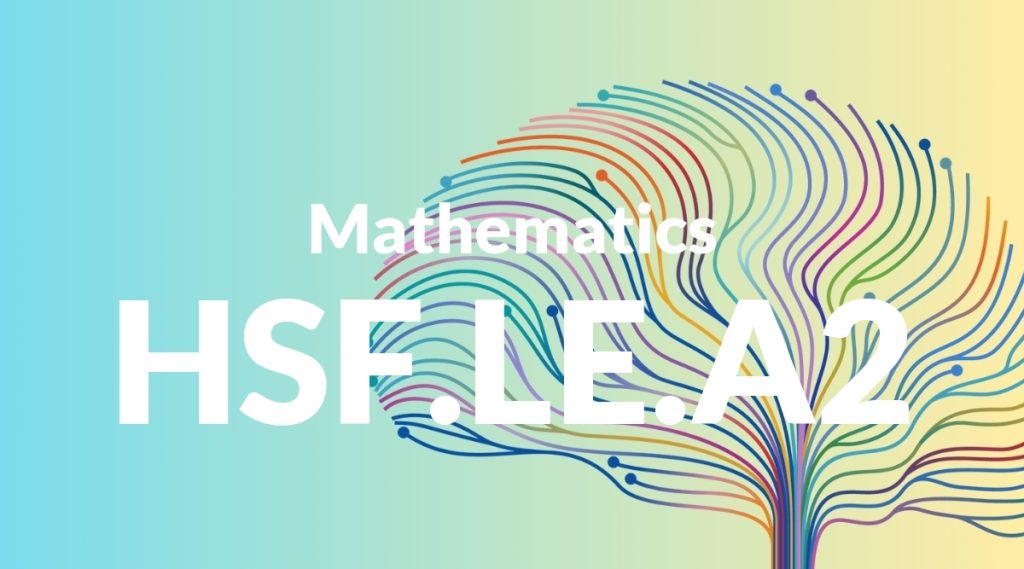Standard: HSF.LE.A2 – Construct linear and exponential functions, including arithmetic and geometric sequences, given a graph, a description of a relationship, or two input-output pairs (include reading these from a table).
Grade level: High School: Functions
Subject: Mathematics
Domain: Linear, Quadratic, & Exponential Models
Teacher Overview
This standard focuses on constructing linear and exponential functions from various representations such as graphs, descriptions, and input-output pairs. It is crucial for students to understand these concepts as they form the foundation for more advanced mathematical topics and real-world applications. Students should be comfortable with basic function concepts, interpreting graphs and tables, and understanding linear and exponential relationships.
Mastering this standard prepares students for more advanced topics, such as polynomial, rational, and trigonometric functions, and equips them to tackle real-world problems in various fields.
Common Misconception 1
One common misconception is that students often confuse linear growth with exponential growth. Linear growth increases by a constant amount, while exponential growth increases by a constant percentage.
Intervention 1
To address this, teachers can use visual aids like graphs to show the differences and provide real-life examples such as simple interest (linear) versus compound interest (exponential).
Common Misconception 2
Another misconception is that students may struggle with identifying the correct function type from a table of values. They might incorrectly assume a pattern or overlook key differences.
Intervention 2
Teachers can provide step-by-step instructions and practice problems, guiding students on how to analyze the rate of change in tables to distinguish between linear and exponential functions.
Prerequisite Knowledge
Students should have a basic understanding of functions, including how to read and interpret graphs, tables, and sequences. They should also be familiar with the concepts of linear and exponential relationships and basic algebraic manipulation.
Subsequent Knowledge
After mastering this standard, students will be able to analyze more complex functions, including polynomial, rational, and trigonometric functions. They will also be able to apply these concepts to real-world scenarios in fields such as physics, engineering, and economics.
Instructional Activities
- Graphing linear and exponential functions from given data
- Analyzing real-world scenarios and identifying function types
- Creating tables of values for linear and exponential functions
- Solving word problems involving arithmetic and geometric sequences
- Collaborative group work to construct functions from graphs and descriptions




